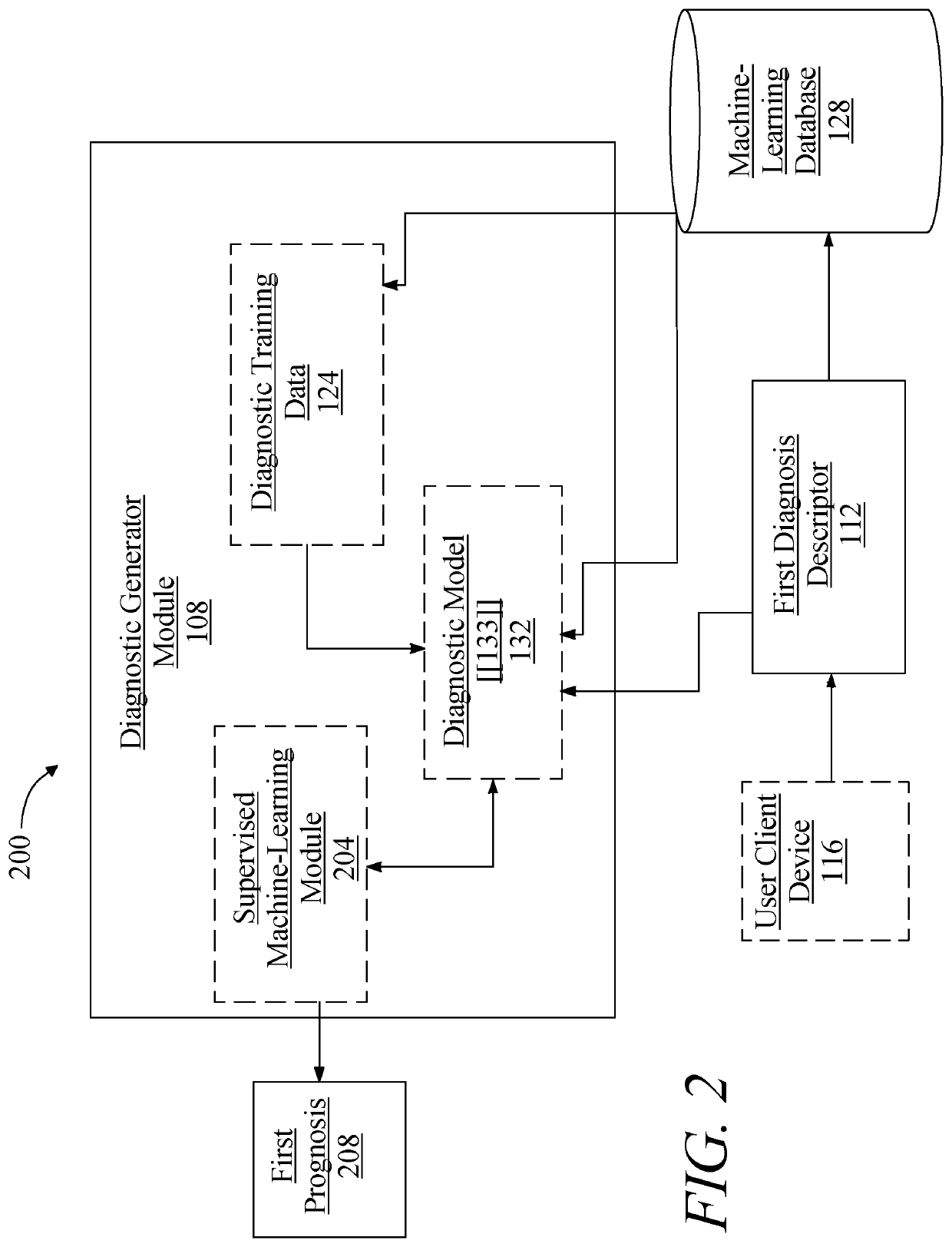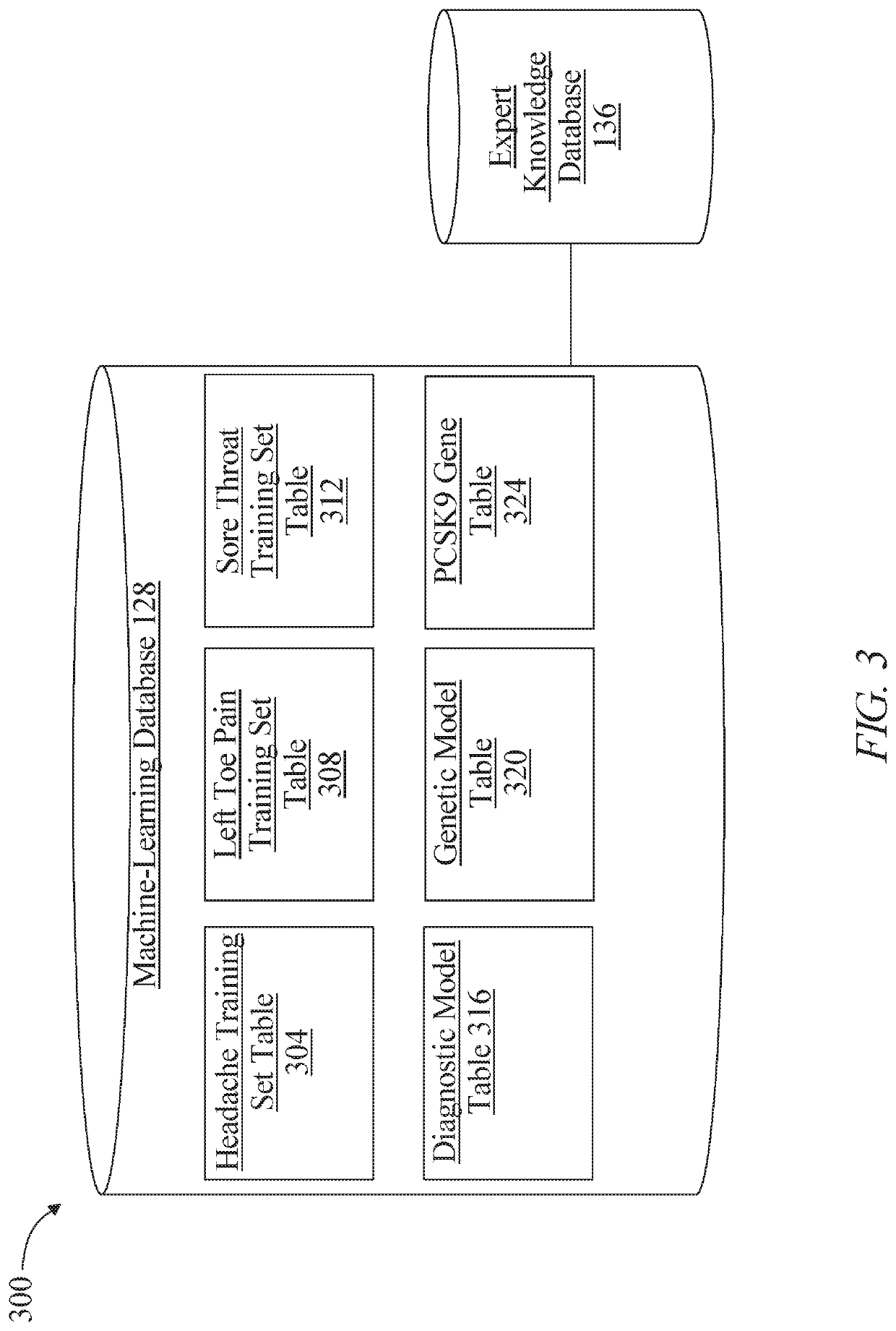Methods and systems for identifying a causal link
a causal link and method technology, applied in the field of artificial intelligence, can solve the problems of exacerbated problems, practitioners often lack adequate time to read and analyze, and difficulty in accurate identification of causal links
- Summary
- Abstract
- Description
- Claims
- Application Information
AI Technical Summary
Benefits of technology
Problems solved by technology
Method used
Image
Examples
exemplary embodiment 400
[0049]Referring now to FIG. 4, an exemplary embodiment 400 of expert knowledge database 136 is illustrated. Expert knowledge database 136 may include any data structure for ordered storage and retrieval of data, which may be implemented as a hardware or software module, and which may be implemented as any database structure suitable for use as machine-learning database 128. Expert knowledge database 136 includes a forms processing module 404 that may sort data entered in a submission via graphical user interface 120 by, for instance, sorting data from entries in the graphical user interface 120 to related categories of data; for instance, data entered in an entry relating in the graphical user interface 120 to a symptom training data set may be sorted into variables and / or data structures for storage of symptom training data sets, while data entered in an entry relating to a symptom training set may be sorted into variables and / or data structures for the storage of, respectively, ca...
exemplary embodiment 500
[0051]Referring now to FIG. 5, an exemplary embodiment 500 of prognostic chaining module 140 is illustrated. Prognostic chaining module 140 may be implemented as any hardware and / or software module. Prognostic chaining module 140 is configured to receive an expert input dataset 144 from an expert knowledge database 136 wherein the expert input dataset 144 further comprises prognostic data correlated to causal link data; receive the first user symptom datum 112 and the first prognosis from the diagnostic generator module 108; generate a gaussian mixture clustering model 152 utilizing the expert input dataset 144 and the first prognosis and outputting a defined number of clusters; and identify a first causal link 156 chained to the first prognosis as a function of generating the gaussian mixture clustering model 152.
[0052]With continued reference to FIG. 5, prognostic chaining module 140 receives an expert input dataset 144 from expert knowledge dataset. Expert knowledge dataset inclu...
exemplary embodiment 600
[0056]Referring now to FIG. 6, an exemplary embodiment 600 of Gaussian mixture clustering algorithm is illustrated. Gaussian mixture clustering module 504 selects a defined number of clusters to generate. In an embodiment, gaussian mixture clustering module 504 may output six clustering which may include first cluster 604, second cluster 608, third cluster 612, fourth cluster 616, fifth cluster 620, and sixth cluster 624. Each of the six clusters may contain a cluster label which may be generated utilizing any of the methods as described above in reference to FIG. 1. First prognosis may be assigned to a labeled cluster group based on mean value parameter and standard deviation parameter as described above in reference to FIG. 1. Each cluster of the defined number of clusters as calculated by Gaussian mixture clustering module may include one or more datapoints assigned to a particular cluster from expert input dataset 144. For example, first cluster 604 may contain datapoint 628. Da...
PUM
 Login to View More
Login to View More Abstract
Description
Claims
Application Information
 Login to View More
Login to View More - R&D
- Intellectual Property
- Life Sciences
- Materials
- Tech Scout
- Unparalleled Data Quality
- Higher Quality Content
- 60% Fewer Hallucinations
Browse by: Latest US Patents, China's latest patents, Technical Efficacy Thesaurus, Application Domain, Technology Topic, Popular Technical Reports.
© 2025 PatSnap. All rights reserved.Legal|Privacy policy|Modern Slavery Act Transparency Statement|Sitemap|About US| Contact US: help@patsnap.com



